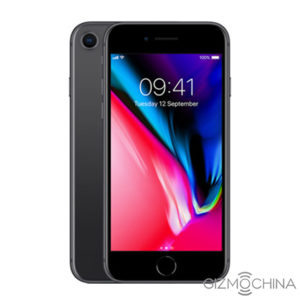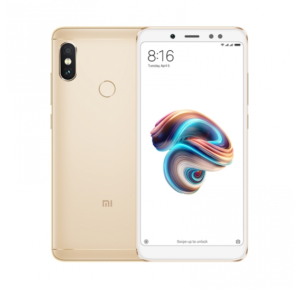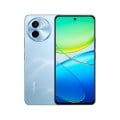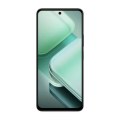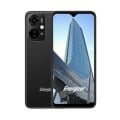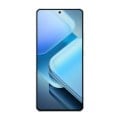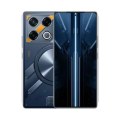Apple iPhone 8 vs Xiaomi Redmi Note 5 Pro
Apple’s long-awaited iPhone 8 smartphone was finally made available to the public on November 6, last year. The Xiaomi Redmi Note 5 Pro smartphone, on the other hand, was launched on February 14, 2018.
Interestingly, the aforesaid smartphones have garnered almost equal popularity among smartphone lovers despite their contrasting design, hardware specs and carrying different price tags. Here’s a short comparison between the two smartphones.
The Apple iPhone 8 sports an eye-catching glass and stainless steel body design, coupled with an equally appealing (IPS) Retina HD display. Moreover, it features stainless steel edges. The ion-strengthened glass is scratch resistant.
The phone’s dimensions are 5.45 in x 2.65 in x 0.29 in (LxWxH) and it weighs in at 148 grams (with battery). The coveted smartphone is up for grabs in a slew of color options including silver, gold, jet black, and gray.
Housed in an aluminum alloy body, the Redmi Note 5 Pro smartphone features a 2.5D curved glass which is further enhanced by rounded edges. Moreover, it sports an FHD+ (2160 x 1080 pixels) display at a pixel density of 403 PPI (pixels per inch).
The phone’s dimensions are 75.5 mm x 158.5 mm x 8.0 mm (LxWxH) and it weighs in at 181 grams (with battery). You can choose from a broad range of color options including gray, gold, black, blue, and rose-gold.
The iPhone 8 is powered by an Apple A11 Bionic processor and it employs a three-core graphics processing unit + M11 mo. It offers 2GB of RAM and 64GB/256GB non-expandable onboard memory.
The device draws its juices from a 2,500 mAh Li-Poly (Lithium Polymer) battery which offers up to 403 hours of standby time and up to 12 hours of talk time. Equipped with wireless charge feature, this battery is non-removable.
The iPhone 8 does not offer external memory support. However, it features a slew of sensors such as fingerprint, accelerometer, barometer, compass, gyroscope, light sensor, and proximity.
The Xiaomi-made Redmi Note 5 Pro smartphone packs a powerful Qualcomm Snapdragon 636 64-bit processor, under the hood. It uses an equally robust Qualcomm Adreno 509 graphics processing unit.
The phone has 4GB/6GB of RAM, paired with 64GB/64GB of onboard memory that can further be expanded up to 128GB using SIM 2 slot. Moreover, it is backed by a non-removable 4,000 mAh Lithium-Polymer battery that offers a standby time of about 300 hours and a talk time of about 15 hours.
In terms of card slots, the Redmi Note 5 Pro features microSD, microSDHC, and microSDXC. On top of that, it boasts an array of beneficial sensors such as proximity sensor, accelerometer, light sensor, a rear-mounted fingerprint sensor, compass, gyroscope, and hall.
The 64GB version of the Apple iPhone 8 comes bearing a steep price tag of about $699. However, you can get your hands on the relatively low-priced Xiaomi Redmi Note 5 Pro smartphone by shelling out about $290.
You can check out a more detailed comparison between the two very well-received smartphones below.
-
Product Name
-
Product Image
-
Price$229.00
-
Our Rating
-
Brand
-
Category
General
-
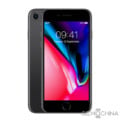
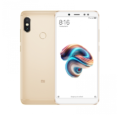
-
ModelModel A1863, Model A1905 Redmi Note 5 Pro
-
Released22/09/17 14 February, 2018
-
StatusAvailable Available
Design
-


-
Type Design Type called form factor refers to a mobile phone's size, shape, and style as well as the layout and position of major components of phone. There are three major form factors seen in mobile phones => bar phones, folding phones and sliding phones.Bar Bar
-
Dimensions138.3 x 67.3 x 7.3 mm 75.5 mm x 158.5 mm x 8.0 mm
-
Weight148g 181 Grams (With Battery)
-
WaterproofYes - IP67
Display
-


-
Display Type Display Technology => A number of display technologies and types used in mobile phones => TFT (Thin Film Transistor), IPS (In-Place Switching), OLED (Organic Light Emitting Diode), AMOLED (Active-Matrix Organic Light-Emitting Diode), Super AMOLED (an even advanced version of AMOLED), Resistive Touchscreen (Resistive touchscreens contain two layer of conductive material with a very small gap between them which acts as a resistance), Capacitive Touchsceen (Capacitive touchscreen technology consists of a layer of glass coated with a transparent conductor)IPS IPS, LCD capacitive touchscreen
-
Size4.7 inch 5.99-Inch
-
Resolution1334 x 750 1080 x 2160 Pixels, 24 bit color depth
-
Display Colors Display Colors is refers to the number of different shades of colors that the screen is capable of displaying => 64K colors, 256K colors and 16 million colors, Obviously 16M is highest available range of colors and better than others.16.7 Million Colors, 1400:1 Contrast Ratio, 625 cd/m2 Max Brightness 16M Colors
-
Pixel Density Pixel Density (PPI) is refers to the concentration of pixels on a particular display, measured in pixels per inch (ppi). Pixel density is calculated by dividing the diagonal pixel resolution of a display by its diagonal size, higher pixel density better display quality.326 ppi ~ 403 PPI
-
Touch ScreenYes Yes Multi Touch Support
-
Display Protection Display Protection => Gorilla Glass is a special alkali-aluminosilicate glass shield with exceptional damage resistance that helps protect mobile displays from scratches, drops, and bumps of everyday use, It is always better to go for a smartphone with Gorilla Glass for that added protection and peace of mind.Yes
-
FeaturesFingerprint-Resistant Oleophobic Coating, 3D Touch FHD+ display
~ 403 PPI
Capacitive
Multi-touch
2.5D Curved Glass
1000:1 Contrast ratio
450 cd/m2
84% NTSC
Scratch resistant
Hardware
-


-
CPU The main chipset of the device.Octa-Core 1.8GHz Kryo
-
GPU GPU (Graphics Processing Unit) is a single-chip processor designed to rapidly manipulate and alter memory to accelerate the creation of images in a frame buffer intended for output to a display, This includes things such as lighting effects, object transformations, and 3D motion.3-Core Custom Chip - TBD Qualcomm Adreno 509
-
RAM (Memory) RAM (Random Access Memory) is a type of computer memory that can be accessed randomly, any byte of memory can be accessed without touching the preceding bytes that allows information to be stored and accessed quickly from random locations. RAM is the most common type of memory found in computer systems, smartphones, tablets and other electronic devices.2GB 3GB/4GB
-
Internal Storage Internal Storage is a data storage space (flash memory) mostly used in smartphones, tablets and other electronic devices where operating system, apps, music, photos, videos, files and other user data Is stored.64GB/256GB 32GB/64GB
-
Memory Card Slot Memory Card Slot is a special slot for inserting a memory card. Memory cards allow you to expand the phone's built-in memory, A memory card (sometimes called a flash memory card or a storage card) is a small storage medium used to store data such as text, pictures, audio, and video, for use on small, portable or remote computing devices such as mobile phones, mp3 players, digital cameras.No microSD, microSDHC, microSDXC
-
Sensors Sensors are electronic components that detects and responds to some type of input from the physical environment. The specific input could be light, heat, motion, moisture, pressure and location, The output is generally a signal that is converted to use in computing systems, a location sensor, such as a GPS receiver is able to detect current location of your electronic device.Fingerprint Sensor (Front), Barometer, Gyroscope, Accelerometer, Proximity Sensor, Ambient Light Sensor Proximity Sensor
Accelerometer
Light Sensor
Fingerprint
Compass
Gyroscope
Hall
Software
-


-
Operating System OS => Every computer system run on a base software called Operating System (OS). Operating System controls all basic operations of the computer (such as smartphone, PDAs, tablet computers and other handheld devices). The Operating System allows the user to install and run third party applications (apps), apps are used to add new functionality to the device.iOS 11 Android 7.0 Nougat
-
User Interface UI or user interface of a device is the look and feel of the on-screen menu system. How it works, its color scheme, how it responds to button presses, all of these things are part of the user interface.iOS 11 Yes with MIUI V9.7.9
Camera
-


-
Rear Camera Camera is able to capture photographs and usually videos, The most important characteristics of a camera are the resolution (measured in megapixels), lens focus type (fixed or automatic), higher megapixel cameras are known to capture higher quality photos, but not always a good measurement of the photos quality.12 MP f/1.8 12 Megapixels with Dual-LED and AF Rear Camera
-
ImageHEIF, JPEG 4000 x 3000 PIxels
-
Video4K@60/30/24fps, 1080p@30/60/120/240fps, 720p@30fps 1080p@30fps
-
Flash Flash Light => There is commonly two types of flash lights are used in camera mobile phones, LED Flash (LED flash offers lower power consumption with drive circuitry that takes up very little room, LEDs can be strobed faster than any other light source), Xenon Flash (xenon flash produces an extremely intense full-spectrum white light for a very short duration)Quad LED Flash Yes with Dual-LED Flash
-
Front Camera7 MP f/2.2 20 Megapixel Front camera
Network
-


-
SIM SIM (Subscriber Identity Module) is a small card that contains mobile network subscriber's account information. This allows the phone using the card to attach to a mobile network. The SIM card is most commonly associated with GSM and UMTS mobile networks. Moving a SIM card from one phone to another allows a subscriber to switch mobile phones without having to contact their mobile network carrier. SIM cards can also be used by a phone to store limited amounts of data, such as phone numbers and text messages.Nano SIM Standard SIM
-
Dual SIMNo Hybrid Dual SIM (Nano + Nano/microSD)
Connectivity
-


-
Wi-fi Wi-Fi is a popular wireless networking technology using radio waves to provide high-speed network connections that allows devices to communicate without cords or cables, Wi-Fi is increasingly becoming the preferred mode of internet connectivity all over the world.Wi-Fi 802.11 a/b/g/n/ac, Dual-Band, Wi-Fi Direct Wi-Fi 802.11 a/b/g/n, 802.11n 5GHz, Dual band, Wi-Fi Direct, Wi-Fi Display, Wi-Fi Hotspot
-
USBLightning Connector (USB 2.0) MicroUSBv2.0, With OTG, Host, Charging and Mass Storage Function
-
GPS GPS The Global Positioning System is a satellite-based radio navigation system, GPS permits users to determine their position, velocity and the time 24 hours a day, in all weather, anywhere in the world, In order to locate your position, your device or GPS receiver must have a clear view of the sky.Yes - GPS/ AGPS/ GLONASS/ QZSS Yes, with GPS, A-GPS, GLONASS, BeiDou
-
NFC NFC (Near field communication) is a set of standards for smartphones and similar devices to establish peer-to-peer radio communications with each other by touching them together or bringing them into proximity, usually no more than a few inches.Yes No
-
Wireless Charging Wireless Charging (Inductive Charging) uses an electromagnetic field to transfer energy between two objects. This is usually done with a charging station. Energy is sent through an inductive coupling to an electrical device, which can then use that energy to charge batteries or run the device.Yes (Qi Standard)
-
Headphone JackNo Yes
Battery
-


-
Capacity Battery Capacity4,000 mAh
-
PlacementNon-Removable Non-Removable
Media
-


-
Video PlaybackHEVC, MP4, (H.264 Support) Up to 8 Hours
-
Video OutYes With Wireless Media Connection
-
FM RadioYes
-
Ring TonesYes MP3, WAV ringtones
-
LoudspeakerYes Yes
Data
-


-
4G LTE 4G LTE bandsLTE : 850 / 1800 / 2100 / 2600 MHz, LTE-TDD : 1900 MHz (Band 39), LTE-TDD : 2300 MHz (Band 40), LTE-TDD : 2500 MHz (Band 41), LTE-TDD : 2600 MHz (Band 38)
-
SpeedHSPA, HSPA+, LTE, LTE+ LTE Cat 12 600 Mbps Download, 100 Mbps Upload, HSPA+

